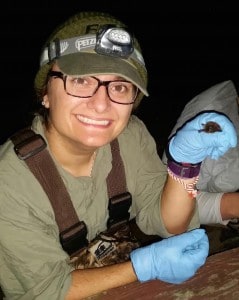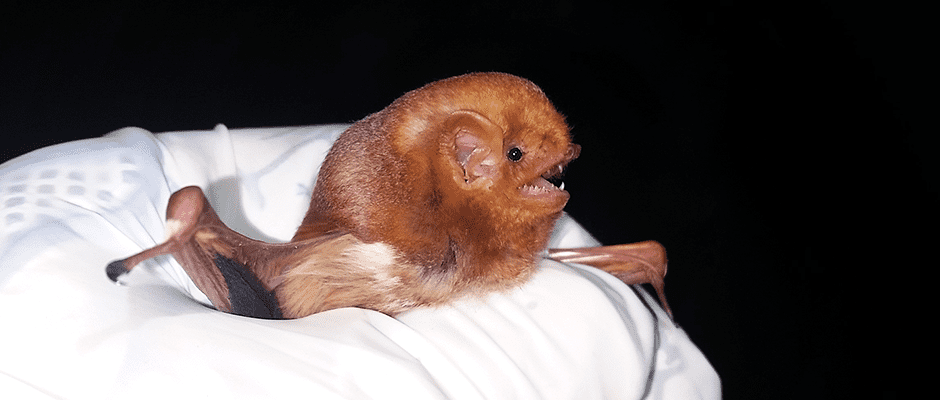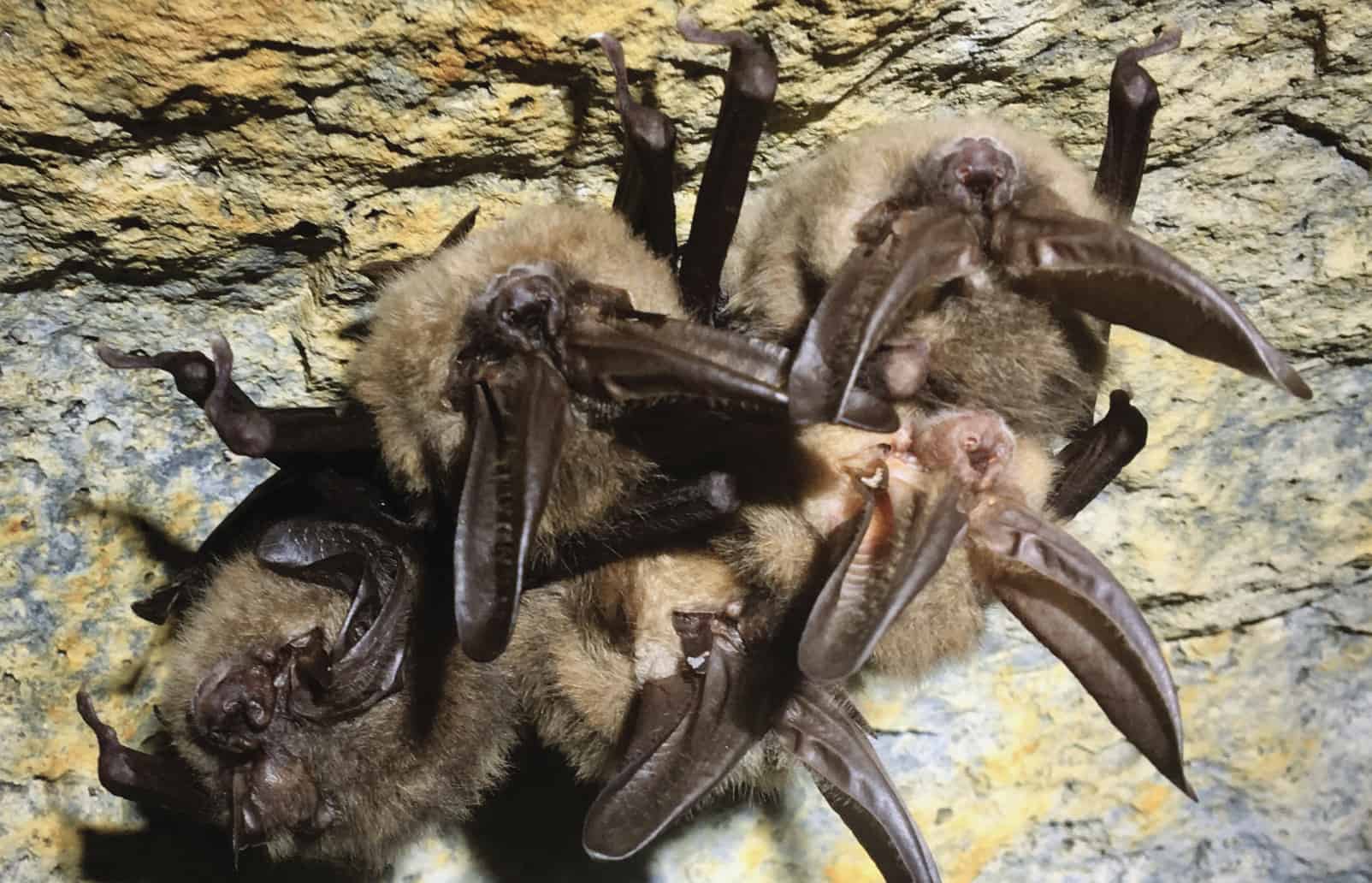Share this article
Clemson student takes new approach to white-nose syndrome
Most wildlife biologists know of the devastating impacts that white-nose syndrome has had on susceptible bat species such as little brown bats and Indiana bats. But how has the disease affected WNS-resistant species? Not much research has been done to answer that question. Until now.
Katie Teets, a master’s student studying wildlife and fisheries biology at Clemson University, won first place in her category of the Student Research in Progress poster session at the TWS Annual Conference in Raleigh, North Carolina. Her research attempts to determine the effects of WNS on niche partitioning among sympatric bat species in South Carolina.
According to her poster abstract, Teets and co-authors from Clemson University, the U.S. Forest Service and the U.S. Geological Survey hypothesized that with the decline of the dominant bat species in a WNS positive site — particularly Myotis species and tri-colored bats — less dominant and less abundant species would exploit the niche space.
Though they are still in the process of analyzing the data, Teets says she has noticed some interesting activity changes from very basic, preliminary data comparisons.

Katie Teets holds a tri-colored bat. ©Katie Teets
“It’s mostly the detections that have changed for the [Myotis bat species] and the tri-colored bats,” she said, “but there’s also been an interesting uptick in activity at the beginning of the night for red bats and white-nose resistant species at Andrew Pickens [District of the Sumter National Forest].”
The Andrew Pickens District of the Sumter National Forest in northwestern South Carolina was one of two study sites and WNS positive. The other site, the Savannah River site in the south central part of the state, was WNS negative. Both areas had been monitored before and had bat data from the pre-WNS era. During the summer of 2016, the researchers collected new data using Anabat Express bat detectors to record calls and identified those calls using a program called Kaleidoscope. After they identified the calls with the automated software, they vetted each call manually.
As expected, resistant species appeared to be more prevalent at the WNS positive site, and most were found in mixed and pine habitat. Resistant species were also prevalent at the WNS negative site, but more tri-colored bats were found there than at the WNS positive site. Most species at the WNS negative site were found in bottomland and upland pine habitats.
“I’m looking more at…how are they behaving and are they changing their behavior for when they’re active at night; or do they prioritize primo niche areas for foraging,” Teets said. “So I think it’ll be interesting information to add to what the USFWS is already looking at.”
Teets also mentioned that the study could help with prioritizing certain habitat types or clutter areas. The researchers suspect bats are choosing uncluttered areas because it makes echolocation easier for them. The next step, she says, is to finish analyzing the data, collect more next summer, and eventually publish a paper on the research. Similar research by a student at the University of Michigan will be combined with Teets’ and together the data will be used in a broader extent to examine changes in bat community structure and WNS impacts in the eastern U.S.
“This is actually my first poster presentation,” Teets said “Presenting at [the TWS Annual Conference] was a good opportunity to talk to people familiar with bats and WNS as well as people who are experts in other areas of the wildlife field.”
Header Image: Red bat. ©Katie Teets








